Have you ever wondered, "Does adding insulation to the attic help?" If you're nodding your head, you're not alone. Many homeowners ponder whether this upgrade, coupled with professional insulation service, is worth the effort and investment. The truth is, that the benefits of adding insulation to your attic can stretch far beyond what you might expect. From slashing energy bills to enhancing home comfort, the impact is significant.
- Does Adding Insulation to the Attic Help?
- Immediate Benefits of Attic Insulation
- Why Continue Reading: In-Depth Insights Await
- Understanding Attic Insulation
- The Role of Insulation in Your Home
- Various Types of Attic Insulation
- How Insulation Affects Home Energy Use
- The Real Benefits of Adding Insulation to Your Attic
- Improved Energy Efficiency and Lower Bills
- Enhanced Comfort Through All Seasons
- Positive Environmental Impact
- Cost Analysis: Investment vs. Savings
- Upfront Costs of Adding Insulation
- Calculating the Return on Investment
- Long-Term Savings Explained
- Debunking Myths About Attic Insulation
- Only Necessary for Cold Climates?
- All Insulation Materials Are the Same?
- Is It a DIY Project?
- How to Assess Your Attic's Insulation Needs
- Signs Your Attic Needs More Insulation
- Professional Assessment: When and Why
- Choosing the Right Insulation for Your Home
- Installation Process
- Preparing Your Attic for Insulation
- The Installation Process: What to Expect
- Post-Installation: Ensuring Effectiveness
- Maintaining Your Attic Insulation
- Routine Checks and Maintenance Tips
- When to Consider Replacing Your Insulation
- Addressing Common Issues
- Frequently Asked Questions
- Can attic insulation save on energy bills in all climates?
- How does attic insulation affect indoor air quality?
- What are the signs of insufficient attic insulation?
- How long does attic insulation last before replacement is needed?
- Do I need a professional to install attic insulation?
- Ready to Upgrade Your Attic Insulation in Austin, TX? Air Central Can Help
In this comprehensive guide, we'll dive deep into the world of attic insulation. Here's a sneak peek at what you'll discover:
- The Immediate Benefits: How insulation can transform your energy consumption and reduce costs.
- Choosing the Right Type: From fiberglass to foam, find out which insulation is best for your home.
- Professional Installation vs. DIY: We break down what you need to know before making a decision.
Does Adding Insulation to the Attic Help?
When you ask, "Does adding insulation to the attic help?" you're tapping into a crucial home improvement question. The short answer is yes, but let's explore why and how. Adding insulation to your attic isn't just about filling space; it's about creating a barrier that impacts your home's overall energy efficiency and comfort.
Immediate Benefits of Attic Insulation
The advantages of upgrading your attic insulation are immediate and noticeable. Here's how it makes a difference:
- Lower Energy Bills: Insulation acts as a thermal barrier. By maintaining your home's temperature, it reduces the workload on your heating and cooling systems. This efficiency translates into lower energy bills, making insulation a smart investment.
- Enhanced Home Comfort: Ever notice how some rooms are too hot in summer or too cold in winter? Proper attic insulation can fix that. By stabilizing your home's temperature, it ensures every room feels comfortable year-round.
- Environmental Impact: Using less energy isn't just good for your wallet; it's good for the planet. By improving your home's energy efficiency, you're contributing to reduced greenhouse gas emissions.
- Noise Reduction: Insulation isn't just about temperature; it also helps dampen noise. Whether it's outdoor traffic or indoor chatter, insulation helps keep your home quieter.
- Moisture Control: In areas with high humidity, insulation helps regulate moisture levels in your attic. This can prevent mold growth and protect the structural integrity of your home.
Why Continue Reading: In-Depth Insights Await
You might be thinking, "Okay, adding insulation helps, but what's next?" Good question! There's a lot more to understand about making your home as efficient and comfortable as possible. Here’s why sticking with us will be worth your time:
- Choosing the Right Insulation: Not all insulation is created equal. We'll guide you through the types of insulation best suited for attics and how to select the right one for your home.
- Installation Tips: Whether you're leaning towards a DIY project or hiring professionals, knowing the process can help you make informed decisions and ensure quality work.
- Cost vs. Value: We'll break down the costs associated with adding attic insulation and contrast them with the long-term savings so you can see the big picture.
- Addressing Common Concerns: Have worries about moisture or ventilation? We've got you covered with expert advice on keeping your attic in top condition.
- Future-Proofing Your Home: Beyond immediate benefits, we discuss how attic insulation contributes to your home's value and environmental sustainability.
Understanding Attic Insulation
When we delve into the subject of attic insulation, it's essential to grasp why it plays such a pivotal role in our homes. This isn't just about padding your attic with extra material; it's about creating a shield that makes your home more energy-efficient, comfortable, and even healthier to live in. Let's unravel the mystery of attic insulation and why it's considered a cornerstone of smart home maintenance.
The Role of Insulation in Your Home
Insulation, especially in the attic, does more than you might think. Here’s how it serves your home:
- Temperature Regulation: It keeps your home warmer in the winter and cooler in the summer by slowing the transfer of heat. This is key to maintaining a comfortable living environment year-round.
- Energy Savings: By managing your home's temperature more effectively, insulation reduces the need for heating and cooling. This means less energy is used and more money is saved on utility bills.
- Moisture Control: Proper insulation helps prevent moisture buildup in your attic. This is crucial because excess moisture can lead to mold, mildew, and even structural damage over time.
- Soundproofing: A well-insulated attic can also reduce the amount of noise that enters your home from the outside. Whether it's traffic, airplanes, or noisy neighbors, insulation helps keep your home quieter.
- Environmental Impact: Using less energy for heating and cooling not only saves money but also reduces your carbon footprint. It's a simple step that contributes to a healthier planet.
Various Types of Attic Insulation
When considering insulation for your attic, it's important to know that there are several types to choose from, each with its own set of benefits. Understanding the differences can help you make an informed decision on which is best for your home.
| Type of Insulation | Material | Benefits |
| Fiberglass | Glass fibers | Affordable, widely available, and easy to install. Suitable for DIY projects. |
| Cellulose | Recycled paper | Eco-friendly, provides excellent thermal performance, and has soundproofing qualities. |
| Spray Foam | Polyurethane foam | Expands to fill gaps, offering high insulation value and air sealing capabilities. |
| Mineral Wool | Rock or steel slag | Fire-resistant, effective at sound reduction, and has moisture-resistant properties. |
| Rigid Foam | Polystyrene or polyurethane | Great for covering large areas efficiently, it provides good thermal resistance. |
Each type of insulation has its place, depending on your specific needs, budget, and whether you're looking for a DIY solution or professional installation. Considerations such as the climate you live in, the age of your house, and existing insulation levels also play a critical role in your decision-making process.
How Insulation Affects Home Energy Use
Adding the right kind of insulation to your attic can significantly impact your home's energy efficiency. Here's how:
- Reduces Energy Consumption: By maintaining a more stable temperature, your HVAC system doesn't have to work as hard. This lowers energy use and can significantly reduce your utility bills.
- Increases HVAC Efficiency: Proper insulation supports your heating and cooling systems to operate at peak efficiency. Without it, your HVAC system may strain to maintain the desired temperature, leading to unnecessary wear and tear.
- Keeps Temperatures Consistent: Areas in your home that are prone to being too hot or too cold can be made more comfortable with adequate attic insulation. This makes for a more uniform temperature throughout your home.
- Lowers Carbon Footprint: By using less energy for heating and cooling, you're also contributing to a reduction in greenhouse gas emissions, making your home more environmentally friendly.
- Enhances Indoor Air Quality: Insulation can help keep pollutants, allergens, and pests out of your home, leading to better indoor air quality.
The Real Benefits of Adding Insulation to Your Attic
Delving into the perks of attic insulation reveals a multitude of advantages that extend beyond the obvious. It's not just about making your home warmer in the winter or cooler in the summer; it's about transforming your living space into a more energy-efficient, cost-effective, and comfortable environment. Let's explore the tangible benefits that attic insulation brings to the table, shedding light on why it's considered a smart investment for homeowners.
Improved Energy Efficiency and Lower Bills
One of the most compelling reasons to add insulation to your attic is the significant improvement in your home's energy efficiency, which directly translates into lower utility bills. Here's how this works:
- Decreased Energy Consumption: Proper insulation helps maintain your home's temperature, reducing the need for constant heating and cooling. This lowers overall energy consumption.
- Cost Savings: With reduced energy usage comes a noticeable decrease in heating and cooling costs. Over time, the savings can offset the initial investment in insulation.
- Extended HVAC Lifespan: By easing the workload on your HVAC system, attic insulation can contribute to a longer lifespan for your heating and cooling units, saving you money on potential repairs and replacements.
- Enhanced Comfort Year-Round: Consistent indoor temperatures mean you're less likely to experience the discomfort of overheated rooms in summer or chilly drafts in winter.
- Quick ROI: The return on investment for attic insulation is relatively fast, with many homeowners seeing savings on their energy bills within the first few years after installation.
Enhanced Comfort Through All Seasons
One of the less discussed but equally important benefits of adding insulation to your attic is the year-round comfort it provides. No matter the season, proper attic insulation ensures that your home maintains a consistent and pleasant temperature. Here's why:
- Stable Indoor Climate: Insulation acts as a barrier that keeps the outside temperature from influencing your home's internal environment, making it easier to maintain your desired comfort level.
- Reduced Drafts: In winter, insulation minimizes cold air infiltrating your living spaces, keeping warmth in and drafts out.
- Cooler Summers: During the hot months, it reflects heat away from your home, ensuring cooler indoor temperatures without overworking your air conditioning.
- Humidity Control: By maintaining optimal temperatures, attic insulation also helps in controlling humidity levels, reducing the likelihood of dampness and associated discomfort.
- Even Temperature Distribution: Say goodbye to rooms that feel too hot or too cold. Insulation helps achieve a uniform temperature throughout your home.
Positive Environmental Impact
Adding insulation to your attic doesn't just benefit your home and your wallet; it also has a significant positive impact on the environment. Through the lens of sustainability, here's how improved attic insulation makes a difference:
- Lower Energy Consumption: By reducing the need for heating and cooling, insulation decreases your home's energy use, contributing to less fossil fuel consumption and lower greenhouse gas emissions.
- Sustainable Material Choices: Many insulation materials, like cellulose, are made from recycled content, supporting recycling industries and reducing waste.
- Reduced Carbon Footprint: The cumulative effect of lower energy consumption and the use of eco-friendly materials significantly reduces your home's carbon footprint.
- Enhanced Air Quality: By limiting the need for heating and cooling, there's less demand for power plants, which can lead to reduced air pollution and improved overall air quality.
- Long-Term Sustainability: Insulation is a long-lasting home improvement. Its durability means less need for replacement or maintenance, further reducing the environmental impact over time.
Cost Analysis: Investment vs. Savings
When considering adding insulation to your attic, it's essential to weigh the upfront costs against the long-term savings. This cost analysis helps homeowners understand the financial aspect of this investment and how it pays off over time. Attic insulation is not just about enhancing comfort and reducing environmental impact; it's also a financially smart decision for many homeowners.
Upfront Costs of Adding Insulation
The initial expense of adding insulation to your attic can vary widely based on several factors. Here's a breakdown to give you a clearer idea:
- Type of Insulation: Costs differ significantly between materials. Fiberglass, for instance, tends to be more affordable than spray foam insulation.
- Size of the Attic: Naturally, the larger your attic, the more material you'll need, which increases the cost.
- Current State of the Attic: If your attic requires repairs or preparation before insulation can be added, this will add to the initial expense.
- Professional Installation vs. DIY: Hiring professionals adds to labor costs but ensures the job is done efficiently and effectively. DIY can save money but might not offer the same quality and longevity.
- Additional Features: Ventilation improvements or moisture barriers, necessary for optimal insulation performance, can also contribute to the cost.
Calculating the Return on Investment
Understanding the return on investment (ROI) for adding insulation to your attic is critical for homeowners. This calculation helps in assessing the financial benefit over time, considering the upfront costs versus the savings on energy bills. Here’s how to get a grip on the ROI:
- Initial Investment: Sum up the total upfront costs, including materials, labor, and any necessary repairs or upgrades.
- Annual Savings: Estimate the yearly savings on your energy bills post-insulation. This varies based on your climate, home size, and energy rates.
- Payback Period: Divide the initial investment by the annual savings to calculate how many years it will take for the savings to cover the cost of insulation.
- Increased Home Value: Factor in the added value to your home, as energy-efficient homes often sell at a premium.
- Environmental Savings: Though not quantifiable in direct monetary terms, reducing your carbon footprint contributes to long-term environmental health and can be considered a form of savings.
Long-Term Savings Explained
The benefits of attic insulation extend far beyond the immediate comfort improvements and energy efficiency. Here's a deeper look into the long-term savings:
- Reduced Energy Bills: The most tangible benefit is insulation helps maintain your home’s temperature, thereby lowering the need for heating and cooling.
- HVAC Efficiency: With reduced strain on your HVAC system, expect lower maintenance and repair costs, extending the lifespan of your heating and cooling units.
- Tax Credits and Rebates: Some regions offer incentives for energy-efficient home improvements, further reducing the net cost of your insulation project.
- Avoiding Costly Repairs: By regulating attic temperature and humidity, insulation helps prevent ice dams, roof damage, and mold growth, avoiding expensive repairs.
- Future Energy Rate Hikes: As energy costs rise, the savings from your insulation become even more significant, amplifying the return on your initial investment.
Debunking Myths About Attic Insulation
Attic insulation is surrounded by misconceptions that can deter homeowners from making this wise investment. Understanding the truths behind these myths is essential for recognizing the full scope of benefits insulation offers, regardless of your home's location or climate.
Only Necessary for Cold Climates?
One of the most persistent myths about attic insulation is that it's only beneficial if you live in a cold climate. This couldn't be further from the truth. Let's set the record straight:
- All-Climate Utility: Insulation is just as important in hot climates as it is in cold ones. In warmer areas, it prevents the cool air inside your home from escaping, keeping your living spaces comfortable without overworking the air conditioner.
- Year-Round Comfort: In regions with seasonal temperature variations, attic insulation helps maintain a consistent indoor environment, reducing the need for heating in the winter and cooling in the summer.
- Energy Savings: Regardless of the climate, insulation reduces the demand on your HVAC system, leading to significant energy savings and lower utility bills.
- Prevents Heat Transfer: In hot climates, a well-insulated attic blocks heat from entering the home, which is especially crucial during peak summer months.
- Enhances HVAC Efficiency: By stabilizing indoor temperatures, insulation allows heating and cooling systems to operate more efficiently, extending their lifespan and reducing maintenance costs.
All Insulation Materials Are the Same?
A common misconception is that all insulation materials offer the same benefits, but this is far from accurate. The truth is, that the effectiveness of insulation depends largely on the type of material used and its suitability for your specific needs and climate. Let's debunk this myth by highlighting the unique properties and benefits of different insulation materials:
- Fiberglass: Widely used due to its cost-effectiveness and ease of installation. Ideal for DIY projects but requires protective gear to handle.
- Cellulose: Made from recycled paper, it's an eco-friendly option that provides excellent thermal and sound insulation. It's denser than fiberglass, offering better temperature regulation.
- Spray Foam: Provides an airtight seal, making it superior for preventing air leaks. It's more expensive but offers high energy efficiency.
- Mineral Wool: Known for its fire-resistant properties, it's also effective for soundproofing. However, it can be more costly and less commonly used than fiberglass or cellulose.
- Rigid Foam Boards: Great for covering large areas. They provide excellent thermal resistance and are often used in exterior insulation systems.
Each material has its specific advantages and ideal applications, making it clear that not all insulation materials are created equal. Choosing the right type depends on various factors, including your budget, climate, and whether you're aiming for thermal insulation, soundproofing, or both.
Is It a DIY Project?
While many home improvement projects can be tackled by a determined DIY enthusiast, insulating an attic may or may not fit into that category, depending on several factors. Here’s what to consider before deciding if you should DIY your attic insulation:
- Type of Insulation: Some types, like fiberglass batts, are more manageable for DIY projects. In contrast, spray foam typically requires a professional application.
- Safety Considerations: Insulation materials can be irritant or even hazardous. Proper safety gear and precautions are necessary to avoid health risks.
- Knowledge and Skills: Understanding how to properly install insulation, avoid blocking ventilation, and seal air leaks is crucial for the effectiveness of the project.
- Tools and Equipment: Some insulation types require specific tools for installation. Renting or purchasing these can add to the project's cost.
- Building Codes and Permits: Certain localities might require permits for insulation projects, and the work must meet specific building codes.
How to Assess Your Attic's Insulation Needs
Understanding whether your attic requires more insulation is a critical step toward improving your home’s energy efficiency and comfort. Assessing your attic’s insulation needs doesn't require professional expertise but does call for a careful inspection and some knowledge of what to look for. Here, we’ll guide you through the process, helping you make an informed decision about whether it’s time to upgrade your attic insulation.
Signs Your Attic Needs More Insulation
Recognizing the telltale signs that your attic is under-insulated can save you money and improve your living conditions. Pay attention to the following indicators:
- Uneven Temperatures: If some rooms are significantly warmer or colder than others, it may be a sign that your attic insulation is lacking.
- High Energy Bills: An unexpected increase in your heating or cooling costs could suggest that your home is losing energy through the attic.
- Ice Dams: In winter, ice dams forming at the edge of your roof can indicate heat escaping from your attic, melting snow that then refreezes.
- Cold Floors and Walls: During the colder months, if the floors and walls under the attic feel unusually cold, it’s likely that more insulation is needed.
- Visible Roof Joists: If you can easily see the roof joists in your attic, it means the insulation level is insufficient since it should be above the joists.
Professional Assessment: When and Why
Sometimes, assessing your attic's insulation needs might require more than just a visual inspection. This is where a professional assessment becomes invaluable. Understanding when and why to seek expert advice can ensure that your insulation upgrade is effective, efficient, and meets all necessary standards.
- Complex Home Layouts: Homes with unique or complicated architectural designs might have hard-to-assess insulation needs.
- Suspected Air Leaks: Professionals can perform a blower door test to identify and quantify air leaks, which might not be apparent during a DIY inspection.
- Moisture Issues: If there are signs of moisture or water damage in your attic, a professional can assess the cause and recommend solutions that a layperson might miss.
- Building Code Compliance: An expert can ensure that any insulation upgrade complies with local building codes, which can be complex and vary widely.
- Efficiency Maximization: Professionals can offer advice on the most energy-efficient insulation options for your specific home, climate, and budget.
A professional assessment can save you time and money in the long run by ensuring that your insulation is done right the first time.
Choosing the Right Insulation for Your Home
Selecting the appropriate insulation for your attic is crucial for maximizing energy efficiency and comfort. The right choice depends on various factors, including your home’s design, your climate, and your energy-saving goals.
- Understand R-Values: Insulation effectiveness is measured in R-values. Higher R-values mean better insulation properties. Choose insulation with the R-value recommended for your area.
- Consider Material Types: From fiberglass to spray foam, each material has its pros and cons. Research which type fits your needs regarding durability, moisture resistance, and ease of installation.
- Climate Considerations: The ideal insulation for your home heavily depends on your local climate. In colder regions, you might prioritize higher R-values, while in warmer areas, you might focus on reflective materials.
- Evaluate Sustainability: If environmental impact is a concern, look into materials like cellulose or mineral wool, which are more eco-friendly.
- Budget Balancing: While higher-quality insulation may have a higher upfront cost, it can offer more significant long-term savings on energy bills. Balance your immediate budget with your long-term savings goals.
Installation Process
Installing insulation in your attic may seem daunting, but understanding the process can demystify it, making it more approachable and manageable. Proper installation is key to maximizing the effectiveness of the insulation, ensuring your home remains energy-efficient, comfortable, and environmentally friendly. Let's break down the steps involved in the installation process to help you know what to expect, whether you're tackling the project yourself or hiring professionals.
Preparing Your Attic for Insulation
Before adding or upgrading insulation, preparing your attic is a crucial first step. This preparation ensures that the insulation will perform optimally, insulation can last for years and provides significant energy savings. Here’s how to get your attic ready:
- Inspect for Damages: Look for any signs of roof leaks or water damage. Moisture can compromise the effectiveness of insulation, so it's important to repair these issues first.
- Seal Air Leaks: Use caulk or foam to seal gaps around pipes, ductwork, and electrical boxes. Air sealing is essential for preventing heat from escaping.
- Ventilation Check: Ensure your attic has proper ventilation. This prevents moisture buildup and helps regulate temperature, extending the life of your insulation.
- Remove Old Insulation (if necessary): In some cases, old or damaged insulation may need to be removed before installing new materials. This step should be handled with care, especially if the old insulation contains asbestos or other hazardous materials.
- Clean the Attic Floor: Dust and debris can hinder the effectiveness of insulation. A clean surface allows for a smoother installation process and better adhesion of the insulation material.
The Installation Process: What to Expect
The installation process for attic insulation varies depending on the type of insulation you choose and whether you decide to install it yourself or hire professionals. However, understanding the general steps involved can help set your expectations and ensure the project goes smoothly. Here's a walkthrough of what typically happens during the installation:
- Initial Assessment: Whether DIY or professional, the first step involves assessing your attic's current condition, measuring the space, and deciding on the insulation type and R-value.
- Preparation: Based on the preparation steps discussed earlier, ensure the attic is ready for insulation. This includes repairs, cleaning, and air sealing.
- Material Delivery: If you're working with a professional installer, they'll bring the insulation material. DIYers will need to purchase and transport materials themselves.
- Installation: The actual installation process will depend on the insulation type. Batt and roll insulation are laid out and cut to fit, while loose-fill or spray foam insulation is blown in or sprayed into place.
- Safety Measures: Throughout the installation, proper safety gear should be worn, especially if dealing with fiberglass or other irritant materials.
Post-Installation: Ensuring Effectiveness
After the insulation is installed, a few key steps can help ensure it performs effectively and maximizes your home's energy efficiency:
- Inspection: Conduct a thorough inspection to ensure the insulation is evenly distributed and there are no gaps or voids. For DIY projects, it might be beneficial to have a professional verify the installation.
- Ventilation Check: Re-assess the attic's ventilation to ensure it's not obstructed by the new insulation, maintaining proper airflow to avoid moisture issues.
- Energy Audit: Consider having an energy audit performed to measure the efficiency of your insulation and identify any areas for improvement.
- Maintenance Plan: Establish a maintenance schedule to check the insulation's condition over time, looking for signs of settling, moisture, or damage.
- Document: Keep records of the installation process, materials used, and any warranties or guarantees. This documentation can be valuable for future reference or if you decide to sell your home.
Maintaining Your Attic Insulation
After your attic insulation is properly installed, maintaining it is crucial to ensure it continues to perform at its best over the years. Insulation doesn't just sit there—it plays an active role in your home's energy efficiency and comfort. Regular maintenance helps preserve its effectiveness, prolongs its lifespan, and can prevent costly repairs or replacements down the line. Let's explore how to keep your insulation in top condition.
Routine Checks and Maintenance Tips
Staying on top of insulation maintenance doesn't have to be a daunting task. Here are some straightforward steps you can take to ensure your attic insulation remains effective:
- Annual Inspections: Once a year, take a peek into your attic to check the state of your insulation. Look for any signs of settling, dampness, or displacement that could affect its performance.
- Look for Pests: Rodents and insects can damage insulation, reducing its effectiveness. If you notice any signs of pests, address the problem immediately to prevent further damage.
- Check for Moisture: Moisture can severely degrade insulation materials, leading to mold and mildew. If you find any wet spots or signs of water damage, find the source of the leak and repair it promptly.
- Avoid Compression: Store items in your attic carefully to avoid compressing the insulation, which can reduce its R-value. Consider using raised platforms for storage that don't impact the insulation.
- Update as Needed: If your energy bills start creeping up or you notice drafts that weren't there before, it may be time to add more insulation or replace old materials that aren't performing as well.
When to Consider Replacing Your Insulation
While insulation is designed to last many years, there will come a time when it needs to be replaced to maintain your home's energy efficiency and comfort levels. Knowing when to replace your attic insulation is crucial for keeping up with your home's energy needs and ensuring a healthy living environment. Here are key indicators that it's time to consider replacing your insulation:
- Age of the Insulation: If your insulation is several decades old, it's likely not as effective as modern materials. Insulation technology has advanced, offering better energy efficiency.
- Signs of Deterioration: Insulation that is compacted, has shifted, or shows signs of wear and tear isn't performing optimally.
- Moisture Damage: Water can severely damage insulation materials, leading to mold, mildew, and reduced effectiveness. If you've had leaks, it's worth inspecting for water-damaged insulation.
- Increased Energy Bills: A noticeable creep in your heating or cooling costs could indicate that your insulation isn't as effective as it once was.
- Pest Infestations: Rodents and insects can nest in and destroy insulation, compromising its integrity and effectiveness.
Replacing outdated or damaged insulation can not only improve your home’s energy efficiency but also enhance indoor air quality and comfort.
Addressing Common Issues
Maintaining attic insulation involves identifying and addressing common issues that can arise over time. Proactively managing these challenges can extend the lifespan of your insulation and ensure it continues to perform well. Here are common insulation problems and how to address them:
- Compression and Settling: Over time, some types of insulation can settle or become compressed, reducing their R-value. Periodically check the thickness of your insulation and add more if necessary.
- Air Leaks: Even with great insulation, air leaks can undermine energy efficiency. Use caulk or foam spray to seal leaks around attic hatches, vents, and light fixtures.
- Inadequate Ventilation: Proper attic ventilation is essential to prevent moisture buildup. Ensure soffit vents are not blocked, and consider adding ridge or gable vents if needed.
- Dust and Debris: Keeping your attic clean can help insulation perform better. Remove dust and debris that can accumulate over time, especially near vents.
- Upgrading for Better Performance: With advances in insulation materials, upgrading to more efficient options like spray foam can offer better thermal resistance and air-sealing properties.
Frequently Asked Questions
Can attic insulation save on energy bills in all climates?
Yes, attic insulation can lead to energy bill savings in all climates, whether you're in the sweltering heat of the desert or the frigid cold of the north. Insulation works by reducing the amount of heat that enters your home during the summer and retaining warmth during the winter. This means your heating and cooling systems don't have to work as hard to maintain comfortable indoor temperatures, leading to lower energy consumption and, consequently, reduced energy bills. The key is selecting the right type of insulation and ensuring it's properly installed to meet the specific needs of your climate. For instance, homes in colder climates might benefit more from higher R-value insulation, which offers greater resistance to heat flow, while those in warmer areas might prioritize insulation that also reflects heat.
How does attic insulation affect indoor air quality?
Attic insulation can significantly impact indoor air quality, mainly through its role in temperature regulation and moisture control. Proper insulation keeps indoor temperatures stable, reducing the likelihood of moisture buildup, which can lead to mold and mildew growth—common culprits of poor indoor air quality. Moreover, some insulation materials are designed to be air-sealed, preventing outdoor pollutants and allergens from entering the home. However, it's essential to choose insulation materials that don't emit harmful chemicals or gases themselves. For instance, some fiberglass products are certified to have low emissions of volatile organic compounds (VOCs), ensuring they don't compromise indoor air quality.
What are the signs of insufficient attic insulation?
Recognizing insufficient attic insulation is key to maintaining an energy-efficient and comfortable home. Some telltale signs include uneven temperatures across different rooms, higher than expected energy bills, ice dams forming on the roof in winter, and the actual physical condition of the insulation—like if it's thin, damaged, or compressed. In winter, you might also notice cold floors or walls just below the attic, which indicate heat is escaping. Visually, if you can see the floor joists in your attic, it's likely you don't have enough insulation, as the material should be thick enough to cover them entirely.
How long does attic insulation last before replacement is needed?
The lifespan of attic insulation varies depending on the material, but it can last anywhere from 20 to 100 years. Fiberglass, for example, can last over 30 years if it remains dry and undisturbed, while cellulose has a shorter lifespan of about 20 to 30 years. Factors that can reduce insulation's effectiveness over time include moisture damage, pest infestations, and physical disturbances (such as during home renovations). It's a good idea to inspect your insulation periodically for any signs of deterioration or shifting and to add or replace insulation as needed to maintain its effectiveness.
Do I need a professional to install attic insulation?
Whether you need a professional to install attic insulation depends on several factors, including the type of insulation you're using, your comfort level with DIY projects, and the complexity of your attic space. Simple installations, like laying fiberglass batts, can be a DIY project for those who are handy and have the right safety equipment. However, more complex installations, such as spray foam or blown-in insulation, typically require specialized equipment and knowledge for effective and safe installation. Additionally, a professional can ensure that your insulation meets local building codes and is installed in a way that maximizes energy efficiency, potentially saving you money and hassle in the long run.
Ready to Upgrade Your Attic Insulation in Austin, TX? Air Central Can Help
Upgrading your attic insulation is a smart move for any homeowner looking to improve energy efficiency, comfort, and air quality. At Air Central in Austin TX, understands the unique needs of every home, and offers tailored insulation solutions to match. Our team of experts is committed to providing top-notch service and advice, ensuring your insulation upgrade is smooth and beneficial. With our focus on quality materials and efficient installation techniques, we're here to help you achieve a more comfortable and cost-effective home. For a personalized consultation and to learn more about how we can assist with your attic insulation needs, contact Air Central today. Let's make your home the best it can be together.

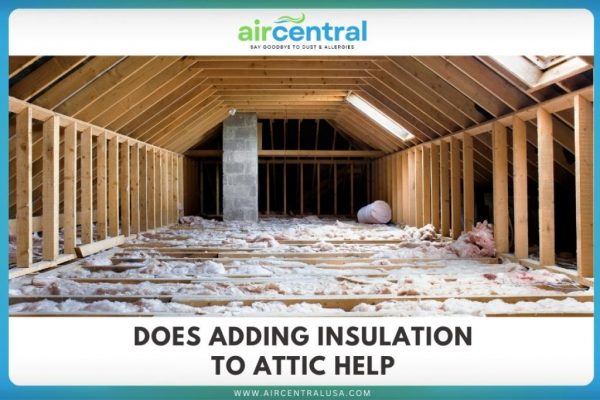

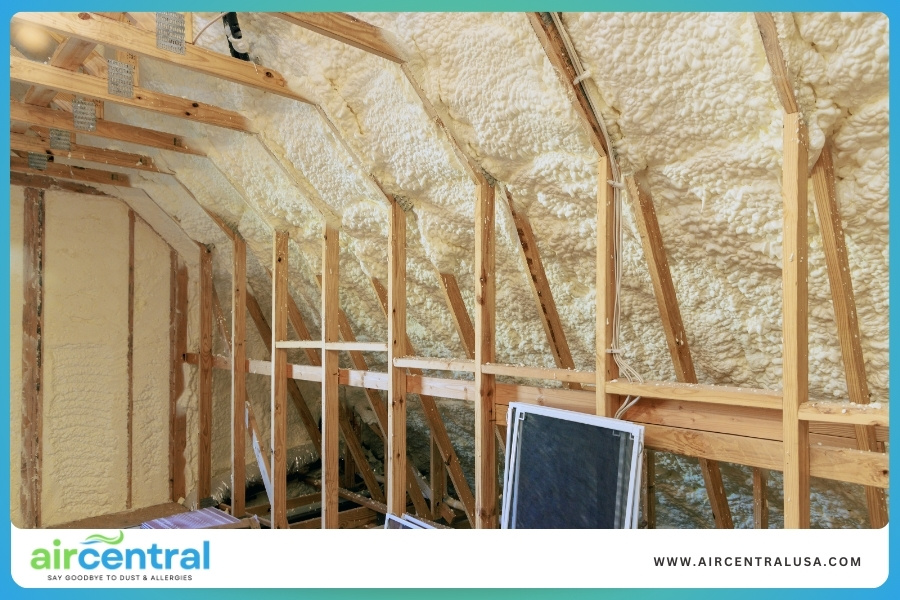

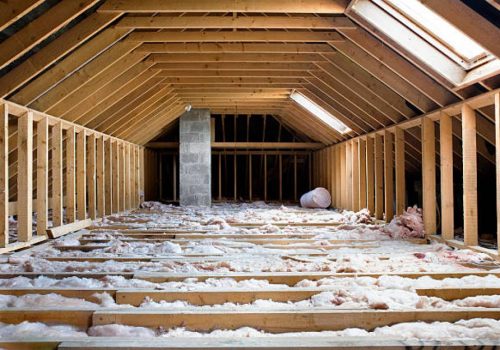

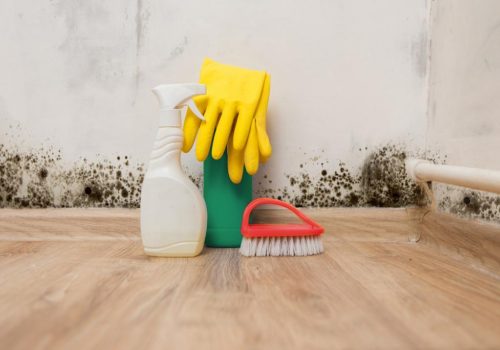
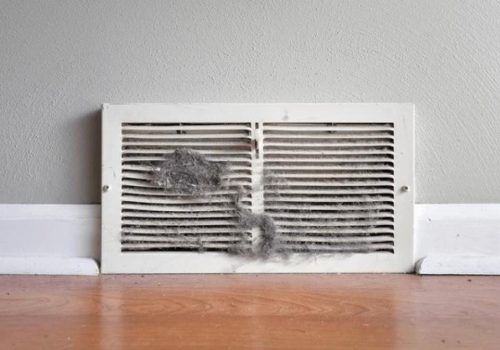

Comments: